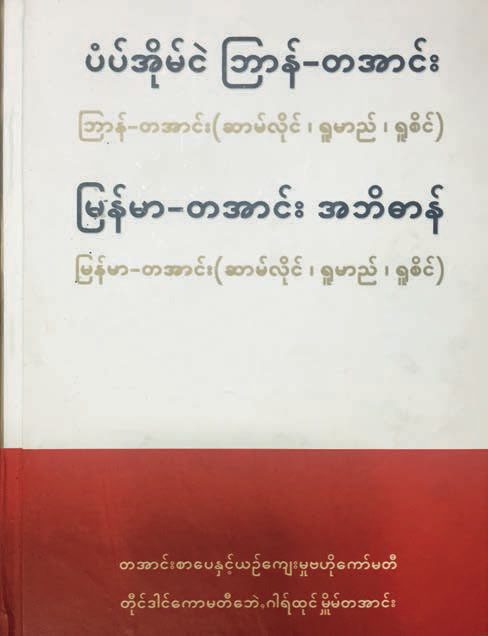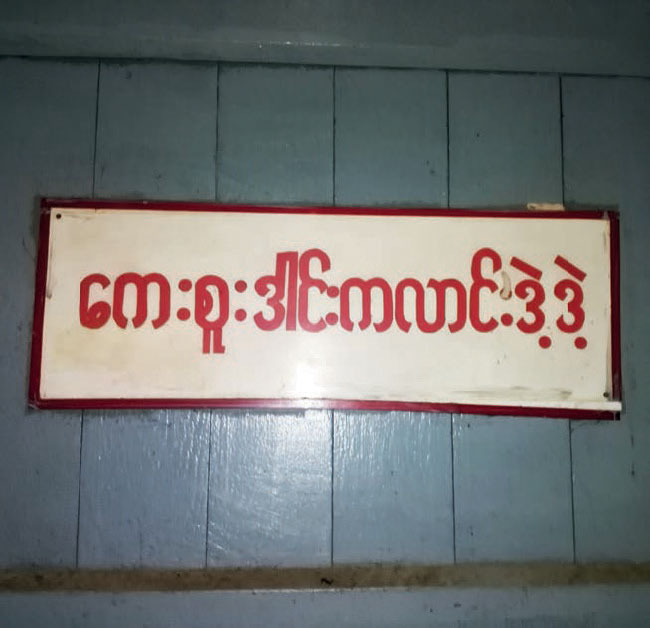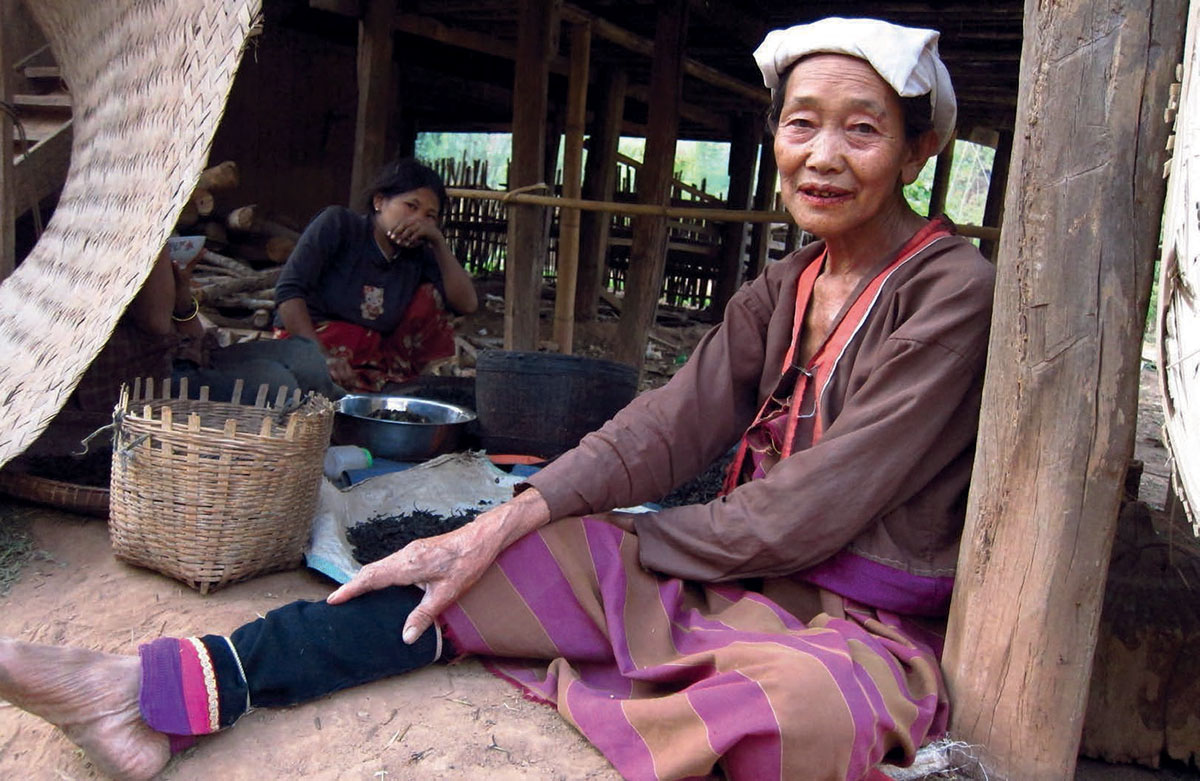A tale of two dictionaries: discovering, decoding and deliberating diversity
<p>One of our first windows into Palaung society was Leslie Milne’s monograph, <em>The Home of an Eastern Clan: A study of the Palaungs of Shan State</em>, published in 1924 after an extended stay in what is now Shan State. Through her writings, we learn of an upland people who were deeply integrated into the Shan world – practicing Buddhism, producing tea and paying tribute to their own <em>sawbwa</em>. Like the Palaung, many other Austroasiatic (Mon-Khmer) speaking groups across the region maintained close relationships with their nearby lowland Tai (Tai-Kradai speakers, including the Shan) neighbors. The conventional wisdom is that the Tai dominate the Austroasiatic in these relationships, sharing the benefits of lowland civilization with the uplanders. The more we learn about these relationships from the perspective of the uplanders, however, the more complex these interactions appear. </p>
Previous generations of scholars wrote that uplanders simply mimicked the more cultured lowlanders when it suited them, but we now understand that uplanders were selective in their cultural adaptations, internalizing and localizing new practices to fit their worldviews. We also find that the cultural exchange went both ways. For example, although we find many Tai words borrowed into Austroasiatic languages, there is a significant list of Austroasiatic words that were also borrowed into Tai languages.
Documenting the Palaung language
Perhaps one of the most important areas of ongoing discovery is the depth of diversity within upland groups. Although Milne writes of ‘the Palaung’, she was well aware of the internal diversity of this group who speak several related languages with varying degrees of mutual intelligibility. Besides her ethnography, Milne also produced major works on the language. Her Elementary Palaung Grammar, printed in Oxford, came out in 1921, followed in 1931 by A Dictionary of English-Palaung and Palaung-English, published in Rangoon. The language she describes is the Palaung as found in Nam Hsan in northern Shan State, whose language the Palaungs call Samlong. As Milne describes in her ethnography, Nam Hsan was the center of Palaung social, economic and political life, with its monasteries, tea plantations and sawbwa’s residence. The last Palaung sawbwa, Khun Pang Cin, represented the Shan states at the Panglong Conference in 1947, where General Aung San and the leaders of the Shans, Kachins and Chins met to discuss their entering the Union of Burma.
In the introduction to the Grammar, Milne describes how she had originally started her recording of the Palaung language in the Nam Hkam area, near the Chinese border. At that time she was doing work on the Shan, which culminated in her first publication, The Shans at Home (1910). During her fieldwork, she got to know the Palaungs living in the hills around the Moeng Mao basin, which straddles the present China-Burma border. The Palaungs there speak Rumai, one of the major language divisions of the language, as both Kojima and Weymuth allude to in their contributions to this Focus.
After fifteen months working with the Rumai, Milne made her way to Nam Hsan, and began to study the language spoken there, particularly that of the sawbwa and his clan. As she tells the story, this language was “considered by the Palaungs themselves to be the most correct and aristocratic form of their language”. In other words, more refined and worthy of a dictionary and grammatical description. The political and economic position of Nam Hsan provides compelling reasons to place importance on the Samlong language. It also happens that Samlong preserves an older sound system and word structure, while Rumai and the others have undergone a series of sound changes, differentiating them from Samlong. At the same time, aspects of the Samlong sound system gave it an ‘older’ feel, so it is perhaps not surprising that the variety has the status it does.
Milne therefore decided to produce a dictionary based on research on Samlong. Yet she comments, “(a)t the same time, my previous studies among the Rumai were not wasted, as although the pronunciation and even many of the words are different in the various clans – none of which have a written language – yet the construction of all these dialects is the same, and the words, even when they differ, suggest a common origin”.
Luckily, Milne included this Rumai material in her dictionary, giving us a glimpse of the diversity of languages she came into contact with during her time with the Palaung. At the back of her Palaung-English dictionary, she adds a section of words from non-Samlong languages, including Rumai, but also languages such as Kyusao, Kumkaw, Tiorai, Omachawn, Kwawnhai, Hupawng, Pangnim, and Ho-mau. To give a taste of the diversity she encountered, let us look at the word for ‘day’ (in her own notation), in Samlong śạ-ngī:, Rumai śɛ-ngāi, Ho-Mau śa-ngö̜-i, Omachawn śa-ngāi, Hupawng śāu, and Kyusao śō̜h. This information was certainly not wasted, as it provided material for linguists to begin systematic work on reconstructing the ancestor of all the current Palaung languages. Linguistic reconstruction is a comparative process that identifies the regular patterns of sound change in the history of a group of related languages. Through these patterns, linguists can show how the contemporary languages have diverged from the parent language, and propose structured relationships among those languages.
Literacy, diversity and diglossia
Milne offered her work as a first attempt to reduce the Palaung language to writing and analyze it. Hers was not, however, the only effort. As Kojima describes in greater detail, Palaungs themselves had started to write their language using Burmese, Shan and Yon scripts, often in conjunction with Buddhist ritual texts. From the outset of such efforts, the Nam Hsan Palaung have been concerned with standardizing the written language as a strategy for Palaung cultural and political survival within the stronger Shan and Burmese worlds. These efforts at standardization form part of a movement to establish an inclusive Ta’ang identity, one that can take part in the changes and opportunities in contemporary Myanmar. In present-day Myanmar, ethnic groups must assert internal coherence and cohesion, while demonstrating inclusiveness, in order to engage with state institutions.
As part of these efforts to create inclusivity, when the Ta’ang Committee for Literature and Culture published the first Burmese-Palaung dictionary (more accurately Burmese-Ta’ang dictionary) in 2012, they included equivalents in three Palaung languages – Samlong, Rumai and Rucing – for each Burmese entry. The dictionary gives the Palaung words in the Burmese-based Samlong script, which gives some sense of the phonological differences between each. At the same time, however, the script obscures some important differences because it was designed for the Samlong language. The main entries for Samlong were done by native speaker members of the Committee, and the list of words was sent to a similar Rumai literacy group in Nam Hkam, who use a similar orthography to represent a language with a slightly different phonological system. The Ruching data was collected by a Nam Hsan scholar, because the literate Ruching use different orthography, similar to the Lanna script. While the dictionary is an important resource, it is important to consider the work done to produce such a dictionary. Here we should recall that the ‘reduction’ of a language to writing, mentioned by Milne in her introduction, is just that: reducing the variety in a real spoken language to an idealized sound system, often preferring words from a dominant dialect or variety.
There is also a lexicon of Rumai, glossed in Burmese and English, which calls itself a “Ta’ang dictionary”. This work also calls to a larger Ta’ang identity being constructed in literary terms, but using the orthography to represent features in the Rumai language that do not exist in Samlong. Despite the historical and linguistic logic that supports Samlong claims to legitimacy as a unifying language, the Rumai have also been developing educational materials, and moving to standardize their variety of the language. I recently heard a Samlong-speaking language planner express consternation at the Rumai efforts, saying they will only make it harder for Ta’ang literacy to take root in society. Rumai music, however, is popular among young Palaung people, suggesting a possible source of prestige and legitimacy among the upcoming generation of speakers.
A further hurdle facing literacy efforts is that the Samlong language is itself undergoing significant changes. Spoken language is constantly in the natural processes of change. Even as the written language preserves older pronunciations, the language of young people changes. Today, some sounds are being lost. For example, the first syllable of two-syllable words are being reduced, and final consonants are also being lost, or changing. A young speaker of Samlong may pronounce the word kərgrai [to chat together] as kəgrai. Similarly, a word like kənbraan [to be hungry] might be reduced to kəbraan. There are also words that only have a simple kə- syllable, such as kətaam [egg]. A young writer may pronounce the first syllable the same, and will have a difficult time knowing how to spell the words correctly. When the spoken language diverges from the idealized forms in the written language – or more accurately perhaps, when a written language is based on a form of the language which is much more conservative than that of the majority of speakers – a situation of ‘diglossia’, can arise. In situations of diglossia, the difference between written and spoken language is so great that people learning to read and write the language in effect learn another language. Such is the classic case between written Arabic and the spoken varieties.
Changing lingua franca
In the process of studying Palaung, I have been involved in many conversations that move freely between Palaung, Burmese and Shan. These are the pillars of the typical Palaung linguistic repertoire. Many Palaung people are able to use more than one Palaung variety, in addition to Burmese, Shan, Chinese, and even Jinghpaw. This type of multilingualism is common among upland groups that find themselves embedded in webs of political, economic and religious influence and opportunity. The Palaung are just one example of the dynamism of multilingualism. When we talk of an area such as the Shan state as being multilingual, we are often talking of a situation where many languages are spoken by groups living in close proximity to each other. More interesting than this, is the fact that local people use more than one language in daily life, making language use choices based on their networks of communication. Without the dynamism implied here, the value of the diversity is often overlooked; worse, with a lack of understanding of dynamic multilingualism, diversity is often seen as a hindrance to social organization.
The social context for these decisions is changing quickly. These changes have to do with increased opportunities for formal education, economic development, the attraction of cities and new connections to regional, national and global communities. Young Palaungs commonly speak of two points of change in their language use. The first has to do with their preference for using Burmese with speakers of other Palaung languages. The current generation has usually been educated in Burmese, and tend to have less experience in working out linguistic differences between themselves and speakers of other Palaung varieties. They therefore tend to prefer Burmese as a common language.
The second is the concurrent decline of Shan as a lingua franca among the younger generation. I have observed that with the increased exposure to Burmese, there seems to be an inverse correlation with exposure to Shan. There are many Shan borrowings in Palaung, but competence in the language seems to be in decline. This could be a matter of convenience, but it also likely reflects changing ideas of language prestige. For young Palaung, Burmese is the language of economic opportunity. More and more, they hear of Ta’ang – together with its written form – as a source of cultural pride.
A calendar and ethnic categories
Early in my study of Rumai, a young speaker taught me the saying, “the Palaung people (khrɨ təʔaaŋ) all eat sour bamboo shoots”. The word khrɨ means ‘descendants’ or ‘relatives’, and represents the idea that there is a large grouping of people that share a common history, and if we follow from the reference to bamboo shoots, a common social and cultural background. The common folk classification of Palaung sub-groups includes thirteen types of Palaung. For someone who is starting to learn about Ta’ang and Palaung, the explanation may lie in a look through a calendar with pictures of traditional Palaung clothing, each with the name of a subgroup. It is probably no coincidence that the number of Palaung subgroups perfectly matches the number of pages in a calendar, plus the cover. The Shan do a similar thing throughout Southeast Asia and in Myanmar in particular; ‘traditional’ dress often marks ethnic groups, and is considered to be especially useful as a visual cue when criteria such as language are so complex. Societies perceive and express internal diversity in a number of ways – language, dress, ritual, kinship, political and economic relations with other groups, and residential patterns, among others. The Palaung sub-group names on the calendar do not correspond, for the most part, with the language varieties known from linguistic research. The calendar highlights the differences in local and international classification schemes based on different criteria and interests.
The principles involved in linguistic classification offers insights into history. Initial efforts to classify Palaung languages provided a picture of how Palaung subgroups were related. Sound changes may relate to movements of people, language contact, or shifting economic or political conditions. The diversity of the Palaung languages has been a focus of the few, but major, efforts to describe the language. This diversity has also featured greatly in evolving ideas about how to create a unified Ta’ang community in contemporary Myanmar; that is, a community that can respond as a group to political and economic opportunities.
The more we learn about the Palaungs and their languages, the more complex the linguistic picture becomes, as does the political project of standardization. We also get a better picture of the depth of diversity within ethnic categories that may or may not be officially recognized. The trade-offs between standardization on the one hand and maintaining diversity on the other are delicate, yet critical matters not only for the Palaung, but for other ethnic groups of Myanmar and the region. Elites may try to push forward standardization in a rush to create unity, but in their efforts, alienate and create ill will among those whose languages are left aside.
The creation of dictionaries is essential to the standardization and codification of any language that has aspirations for official use or as a medium of instruction and writing. A dictionary can be a vital source of information about a language, a culture, a people’s history and their knowledge systems. At the same time, a dictionary is emblematic of the political need to reduce diversity in order to engage with official institutions. Milne’s Palaung and Burmese-Ta’ang dictionaries demonstrate these dynamics. Future dictionaries – be they of a standardized and unified Ta’ang or of spoken varieties – will highlight the rich diversity of the languages themselves, but will also reflect the difficult decisions made to create them.
Nathan Badenoch, Associate Professor, Center for Southeast Asian Studies, Institute for Liberal Arts and Sciences, Kyoto University (badenoch@cseas.kyoto-u.ac.jp).


